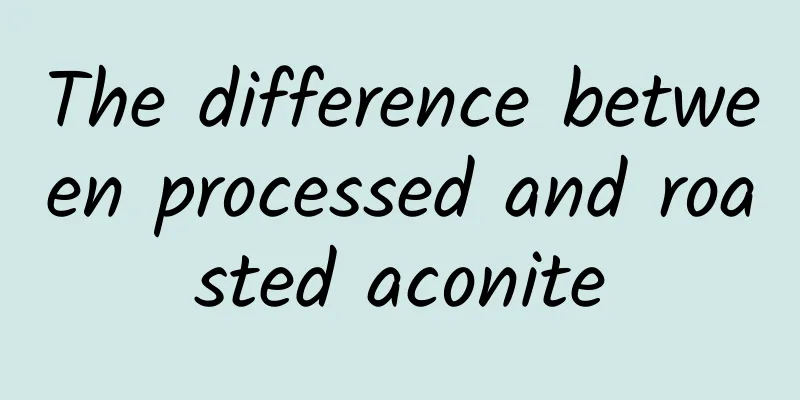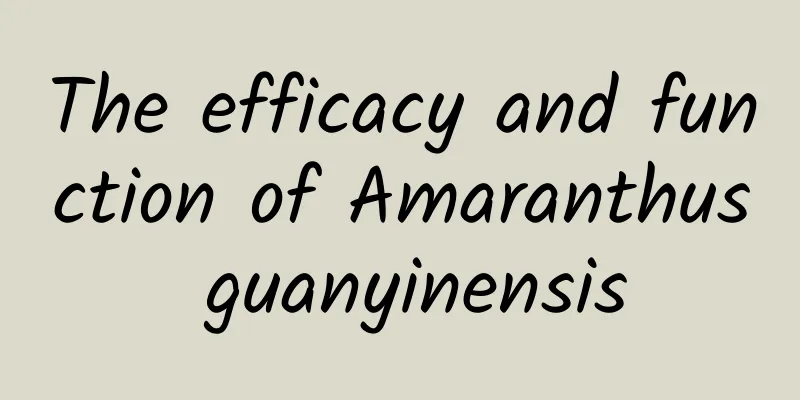The efficacy and function of Bailong Piercing Color

|
As the pressure of modern life increases, more and more health care methods are emerging, but the most popular ones are still traditional Chinese medicine and Chinese medicine that have been tested for thousands of years. For example, Bailong Chuancai, so what are the effects and functions of Bailong Chuancai? Let me introduce it to you today. [Other names] Bailongchangcai, white motherwort, Bailongchuancai [Source] Medicinal material source: the whole herb of the Lamiaceae plant Pustulesiae. [Original form] Pustucao, perennial herb, 30-35cm high. And a thick, woody taproot. The stem is erect, quadrangular, nearly woody at the base, and densely covered with white short hairs. Leaves are opposite; petiole is nearly as long as leaf blade and is pubescent; leaf blade is broadly ovate in outline, 3-5 cm wide, stem leaves are palmately 5-lobed, lobes often reach the base, 2-4 mm wide, often with 2-3 pairs of large teeth or shallow lobes, lobes are linear-lanceolate, densely covered with short hairs on the upper side and densely covered with pubescent hairs on the lower side. The cymes are multi-flowered, most of which are densely arranged into terminal pseudospikes; the bracts are subulate, with sharp thorns at the apex and covered with pubescence; the calyx is tubular and bell-shaped, 1.4-1.8cm long, and densely covered with pubescence on the outside. The cyme has many flowers, most of which are densely arranged into terminal pseudospikes; the bracts are subulate, with sharp thorns at the apex and are covered with tomentose; the calyx is tubular-bell-shaped, 1.4-1.8cm long, densely covered with tomentose outside, with 5 calyx teeth, slightly unequal in size, the first 2 teeth are slightly longer, and the apex is short and sharp; the corolla is light yellow or white, 3-4cm long, covered with long filamentous hairs outside, the upper lip is helmet-shaped, the lower lip is shallowly 3-lobed with red stripes, the middle lobe is larger, heart-shaped, and the lateral lobes are oval; there are 4 stamens, the front pair is slightly longer, slightly covered with fine hairs, and the anthers are 2-chambered; the ovary is 4-lobed, the style is slightly shorter than the stamens, and the stigma is 2-lobed; the flowers are flat-topped. The nutlets are ovate-triangular. The flowering period is from July to September, and the fruiting period is from August to October. [Habitat distribution] Ecological environment: Grown on sandy land at an altitude of 900-1300m. [Properties] Identification of properties: The stem is square, curved and branched, 2-5mm in diameter, and the surface is densely covered with white quivering hairs. Leaves are opposite; leaf blades are mostly curled and wrinkled, and are nearly round or broadly ovate when flattened, 2-4cm long and 3-5cm wide. Stem leaves are often 3-5 deeply lobed, with narrow cuneate lobes, 2-6mm wide, and lobule ovate to lanceolate, densely covered with short hairs on the upper side and densely covered with dense white quivering hairs on the lower side; petioles are slender, flat, and covered with white quivering hairs. The cyme has many flowers, the outside of the calyx tube is covered with quivering hairs, and the lip-shaped corolla is pale yellowish white with long soft hairs. It has a faint smell and a light, slightly bitter taste. 【Nature and flavor】 Spicy; slightly bitter; neutral 【Functions and indications】Regulate menstruation and promote blood circulation; clear away heat and promote diuresis. Mainly used for abdominal pain after childbirth; irregular menstruation; acute nephritis; mastitis; erysipelas; furuncle; abscess [Usage and Dosage] For oral use: decoct in water, 9-15g; or boil into a paste. For external use: take appropriate amount and wash with decoction. 【Excerpt】 Chinese Materia Medica Through the introduction of the above content, we can understand that Bailongchuancai plays a very important role in treating some diseases. The consumption of the traditional Chinese medicine Bailongchuancai should also be determined according to one's physical condition. Remember not to take the medicine blindly. |
<<: The efficacy and function of fly grass
>>: The efficacy and function of Tibetan catfish gall
Recommend
More than 600 scientists jointly published an article: Children are not as tall as their parents? The reason has been found
Being short is a lingering internal injury for mo...
"Poet Immortal" Li Bai was not dazzled, it turns out that he could really "produce purple smoke"!
Recently, many netizens captured a wonderful scen...
The first dog to go into space died peacefully after seven days of orbiting the Earth?
The first life on Earth to enter space was not a ...
What Chinese medicine should I take for high uric acid?
Western medicines that lower uric acid levels wil...
This fruit that I often played with when I was a child actually has a miraculous effect of clearing away heat and detoxifying
The Chinese medicinal herb I’m going to talk abou...
What are the medicines for nourishing qi and blood?
Some people are always weak, but they cannot find...
It causes about 700 billion in losses every year! We want to reduce this number
Produced by: Science Popularization China Author:...
The soldier wiped his butt with its leaves and committed suicide due to the pain
Makes people and animals go crazy with pain The l...
Surprise! The "supermoon" will be here for the Mid-Autumn Festival. This year, you can "feast your eyes"
The bright moon rises over the sea, and the world...
The efficacy and function of rose flowers
Diseases require improvement through medicine. Di...
China Tourism Academy: Development of China's Ice and Snow Tourism in 2023
The report comprehensively summarizes the new ach...
The efficacy and function of yellow oleander
Yellow oleander is a very common medicinal materi...
This stone forest is a bit strange: Three Ordovician stone forests in my country
In the Karst Grand View Garden, Stone Forest is a...
@Friends in Beijing: Your "warmth" comes from this first city at the foot of Yinshan Mountain!
When people in Beijing Brushing the phone In the ...
Are carriages 8 and 9 of the high-speed train not connected?
"Anyone who has taken the high-speed rail kn...









